Attention! If the engine becomes hot after driving for a short period, this may be due to the fact that the radiator is clogged with scale.
Removing the thermostat in 4-cylinder gasoline engines
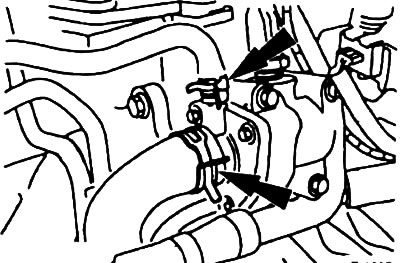
Drain the coolant and collect it, see point 3.3.
Remove the thick coolant hose from the radiator and the thin hose from the thermostat housing. To do this, with the help of pliers, it is necessary to unclench the mounting spring clamps. If necessary, first remove the air intake hose, as a result of which you have better access to the thermostat, see point 5.6.
Disconnect the wire plug from the temperature sensor at the top of the thermostat housing.
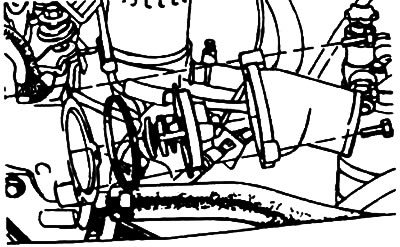
Loosen the three mounting bolts and remove the coolant drain pipe along with the O-ring and temperature controller.
Installing a thermostat
Check the old thermostat before installing it, see end of chapter.
Clean the sealing surfaces of the coolant drain pipe and thermostat housing.
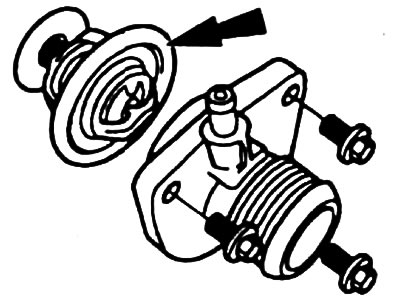
Install the O-ring thermostat into the housing. A defective seal must be replaced. Install the housing on the cylinder head and screw it in with a torque of 20 Nm.
Connect the coolant hoses to the thermostat housing and secure with clamps.
Connect the temperature sensor plug.
Install the air suction hose.
Fill in the coolant see point 3.3.
Warm up the engine, check the connecting pipes for leaks, they may need to be carefully tightened.
Removing the thermostat in a diesel engine
Drain and collect coolant see point 3.3.
Disconnect the thick coolant hose going to the radiator from the thermostat housing. In this case, using pliers, it is necessary to unclench the mounting clamp.
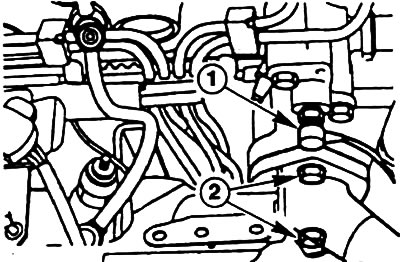
Disconnect the wire connector at the top of the thermostat housing from the temperature sensor -1-.
Loosen the two fixing bolts -2- and remove the coolant drain pipe together with the O-ring and the thermostat.
Take out the thermostat.
Installing a thermostat
Check your old thermostat before installing it.
Clean the sealing surfaces of the coolant drain pipe and thermostat housing.
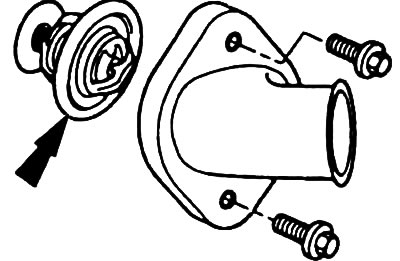
Install the thermostat with the O-ring into the housing. A defective seal -arrow- must always be replaced. Install the housing on the cylinder head and tighten it to 20 Nm.
Connect the coolant hose to the thermostat housing and secure with a clamp.
Connect the plug to the temperature sensor, it should click into place.
Fill in the coolant see point 3.3.
Warm up the engine, check the connecting pipes for leaks, they may need to be carefully tightened.
Thermostat check
Slowly heat the thermostat in a vessel of water. The thermostat must not come into contact with either the bottom or the walls of the vessel. The thermostat must be completely covered with water. Check the water temperature with an appropriate thermometer.

At an opening temperature of approximately +85°C (in diesel engines +70°С) the thermostat should start to open.
When cooling down, check if the thermostat closes completely, otherwise replace it.
Visitor comments